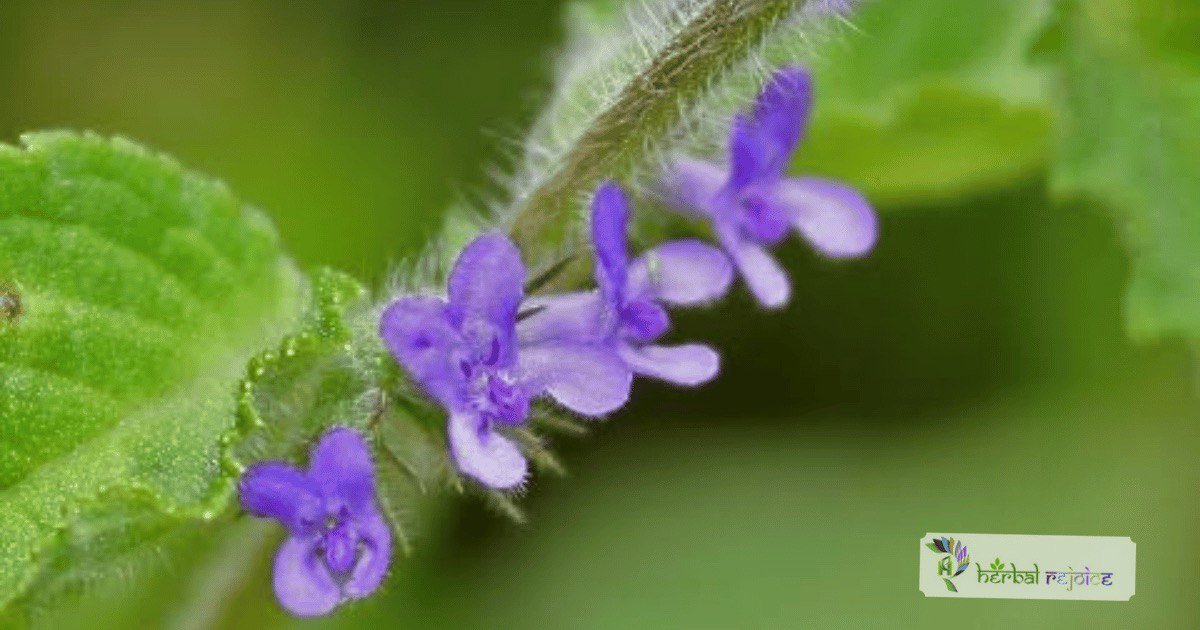Introduction
Hyptis suaveolens (Linn.) Poit, also known as Gangaa Tulasi or Vilaayati Tulasi, is a plant belonging to the Labiatae; Lamiaceae family. Gangaa Tulasi (Hyptis suaveolens) has been used to treat catarrhal and uterine disorders, parasitical cutaneous diseases, and epistaxis.

Names and Habitat
Native to tropical America, this plant has now spread throughout India as well. In Ayurvedic medicine, it is often referred to as Tumbaaka.
Potential Health Benefits of Gangaa Tulasi
The various medicinal properties of Gangaa Tulasi have been recognized for centuries. It is known to possess carminative, antispasmodic, antisoporific, antirheumatic, anticephalalgic, and lactagogue properties. Traditionally, it has been used to treat catarrhal and uterine disorders, parasitical cutaneous diseases, and epistaxis.
Key Components of Gangaa Tulasi
Studies have identified several active compounds present in Gangaa Tulasi. These include lupeol, lupeol acetate, friedelin, campesterol, fucosterol, beta-sitosterol, oleanolic acid, and alpha-peltoboykinolic acid. The plant also contains an essential oil that is rich in l-sabinene, l-limonene, and azulenic sesquiterpenes.
The essential oil derived from Gangaa Tulasi has shown significant antimicrobial properties. It has been found to inhibit the growth of both Gram-positive and Gram-negative bacteria, with a particular effectiveness against Staphylococcus aureus. Additionally, the oil exhibits fungitoxic activity.
Furthermore, a 50% alcoholic extract of the whole plant has demonstrated hypoglycemic and anticancer activity. This suggests that Gangaa Tulasi has the potential to be used in the treatment of diabetes and cancer.
Conclusion
In conclusion, Hyptis suaveolens (Linn.) Poit, commonly known as Gangaa Tulasi or Vilaayati Tulasi, is a plant with a wide range of medicinal properties. Its carminative, antispasmodic, and anti-inflammatory effects make it useful in the treatment of various ailments. Additionally, its antimicrobial and antifungal properties make it a potential candidate for the development of new drugs. Further research is needed to fully understand the therapeutic potential of this remarkable plant.
What are the medicinal properties of Gangaa Tulasi?
Gangaa Tulasi possesses carminative, antispasmodic, antisoporific, antirheumatic, anticephalalgic, and lactagogue properties.
How has Gangaa Tulasi spread throughout India?
Gangaa Tulasi, also known as Gangaa Tulasi or Vilaayati Tulasi, is native to tropical America but has spread throughout India.
What is Gangaa Tulasi referred to in Ayurvedic medicine?
In Ayurvedic medicine, Gangaa Tulasi is often referred to as Tumbaaka.
What conditions has Gangaa Tulasi been traditionally used to treat?
Gangaa Tulasi has been traditionally used to treat catarrhal and uterine disorders, parasitical cutaneous diseases, and epistaxis.
Which active compounds have been identified in Gangaa Tulasi?
Studies have identified several active compounds in Gangaa Tulasis, including lupeol, lupeol acetate, friedelin, campesterol, fucosterol, beta-sitosterol, oleanolic acid, and alpha-peltoboykinolic acid.
What is the composition of the essential oil derived from Gangaa Tulasi?
The essential oil derived from Gangaa Tulasi is rich in l-sabinene, l-limonene, and azulenic sesquiterpenes.
What antimicrobial properties does the essential oil of Gangaa Tulasi possess?
The essential oil derived from Gangaa Tulasi has significant antimicrobial properties and has been found to inhibit the growth of both Gram-positive and Gram-negative bacteria, especially Staphylococcus aureus.
What other therapeutic properties does Gangaa Tulasi exhibit?
Gangaa Tulasi has hypoglycemic and anticancer activity, making it a potential treatment for diabetes and cancer.
What potential does Gangaa Tulasi have in the development of new drugs?
The antimicrobial and antifungal properties of Gangaa Tulasi make it a potential candidate for the development of new drugs.
What plant family does Gangaa Tulasi belong to?
Gangaa Tulasis belongs to the Labiatae; Lamiaceae family.
What is the scientific name of Gangaa Tulasi?
The scientific name of Gangaa Tulasi is Hyptis suaveolens (Linn.) Poit.
Where is Gangaa Tulasi native to?
Gangaa Tulasi is native to tropical America.
What is the common name of Hyptis suaveolens?
The common name of Hyptis suaveolens is Gangaa Tulasi or Vilaayati Tulasi.
How long have the medicinal properties of Gangaa Tulasi been recognized?
The medicinal properties of Gangaa Tulasi have been recognized for centuries.
What disorders has Gangaa Tulasi been used to treat traditionally?
Gangaa Tulasi has been traditionally used to treat catarrhal and uterine disorders, parasitical cutaneous diseases, and epistaxis.
What compounds have been identified in Gangaa Tulasi?
Lupeol, lupeol acetate, friedelin, campesterol, fucosterol, beta-sitosterol, oleanolic acid, and alpha-peltoboykinolic acid are some of the compounds identified in Gangaa Tulasi.
What properties does the essential oil of Gangaa Tulasi possess?
The essential oil of Gangaa Tulasi exhibits antimicrobial and antifungal properties.
What conditions is Gangaa Tulasi potentially useful in treating?
Gangaa Tulasi shows potential in the treatment of diabetes and cancer.





